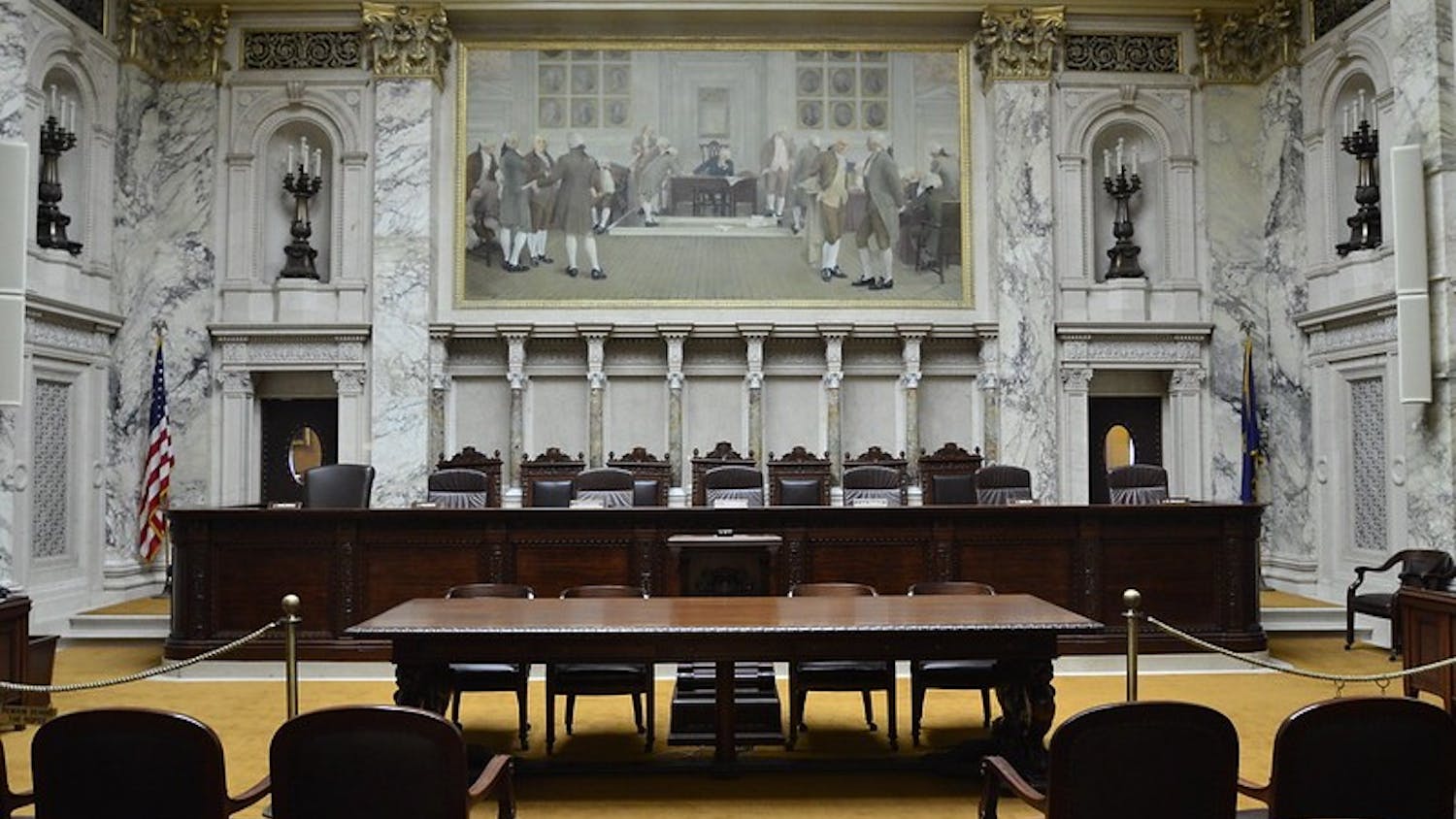Whether on a shopping mission, in the mood for ethnic cuisine or bar-hopping on the weekends, residents of Madison will most likely find themselves wandering down the sidewalks of State Street, one of the most successful pedestrian malls in the nation. For most UW-Madison students, State Street presents more than fa??ades of retail stores and restaurants'it provides a sense of a predictable environment where familiar faces and familiar places are seen.
For the first time, State Street's extensive history, fascinating current existence and its future changes in question have been depicted through the eyes and minds of those who frequent the unique landmark. Through the project of two Madison community residents, State Street will be seen like never before'on the silver screen.
In their first film project entitled \Streets without Cars: The Urban Experiment of State Street,"" Brewer Stouffer and Troy Lanier have produced a digital video documentary of this well-known street, focusing on the survival of a city in this age of suburbs. The film was shot from the fall of 2000 to the winter of 2001 and cost under $10,000 to make. Stouffer and Lanier have applied for funding through various arts and humanities foundations but the production so far has been entirely self-financed.
""We both have full-time jobs,"" Stouffer said. ""One day we hope to be making documentaries full-time.""
According to Stouffer, a technical writer in the UW-Madison College of Engineering, the film has essentially two goals.
""[The first goal] is to document and record the life and livelihood of an amazing urban space, and the second goal is to get the community interested about how urban spaces function,"" Stouffer said. ""State Street is changing, and that doesn't happen by accident. These dynamics are going on all the time, although it seems very permanent. We are trying to let people know while there are changes going on.""
The producers have concentrated on making this documentary an archival piece by capturing the essence of State Street, documenting all the quirks and qualms of this unique urban environment.
""We tried to take a snapshot of the street, but people will learn about the history of State Street and get a chance to experience the street first hand,"" Stouffer said. ""We have some wonderful footage of this homeless man who passed away, Vern. A lot of people on State Street knew him.""
Stouffer became intrigued by State Street after moving to Madison and having visited numerous American cities.
""State Street feels very European'it has a much different feel from New York City or Boston or Columbus, Ohio,"" Stouffer said. ""People don't realize how unique State Street is. It's not just a unique Wisconsin thing, it is a unique national thing. I think people will also enjoy seeing the State Street characters on the big screen, larger than life.""
The documentary consists of three main segments. The first part of the film sets State Street in a historical context, looking at how it became the unique pedestrian mall that it
is today.
Oral history provided by those who have frequented State Street for decades supplies much of the historical information in the documentary. Among the interviewees are former Mayor Paul Soglin, ""Scanner"" Dan and other colorful characters of State Street.
The film also details the process of how State Street came about, with credit to John Nolan.
""John Nolan was an urban planner, 'the father of urban planning,' who came up with a plan for Madison in 1911,"" Stouffer said. ""He called Madison a model city, and it was a big deal. He was a huge influence in how towns and cities were designed after the turn of the century. He even compared Madison to Geneva, Switzerland.""
The second segment of the documentary is what Stouffer called ""street crazy"" or ""street fun."" This is where they focus on the livelihood of the street.
""We go into coffee shops, interview Scanner Dan, we look at homecoming parades, we look at outdoor cafes and the farmer's market,"" Stouffer said. ""We tried to take people to the street and tell the interesting stories of the people who we talked to.""
The final portion of the film looks at how the street is changing and discusses the general trend in gentrification.
""[We discuss] higher-priced restaurants, corporate stores. State Street is getting cleaned up and too much so,"" Stouffer said. ""We are trying to document these things. We're trying to tell the stories about what people seemed to be concerned with.""
One of the concerns discussed in the film revolves around the ongoing infrastructure redesign and the construction of the $100 million Overture Center and planned Madison Cultural Arts District.
""[For the construction of the building] they condemned several local businesses, and we tell those people's stories before their businesses got torn down with a wrecking ball,"" Stouffer said. ""We also look at the designers who are redesigning the State Street pedestrian walkway. Some people want to take the busses off, some people want to put cars on. If you take the busses off, the city would lose a lot of money.""
""We think that people in Madison will get really excited [about the film] and we think we will show it more than just once,"" Stouffer said.
Stouffer and Lanier have plans to submit the film, which is currently in post-production, to Wisconsin Public Television as well as to the Wisconsin Film Festival, and have arranged a showing of the film in spring 2002 at the Orpheum Theatre, 216 State St. Jeff Golden, who has done a variety of voice-overs for Wisconsin Public Television, narrates.
""He is a a seasoned professional and has been able to give us advice,"" Stouffer said.





